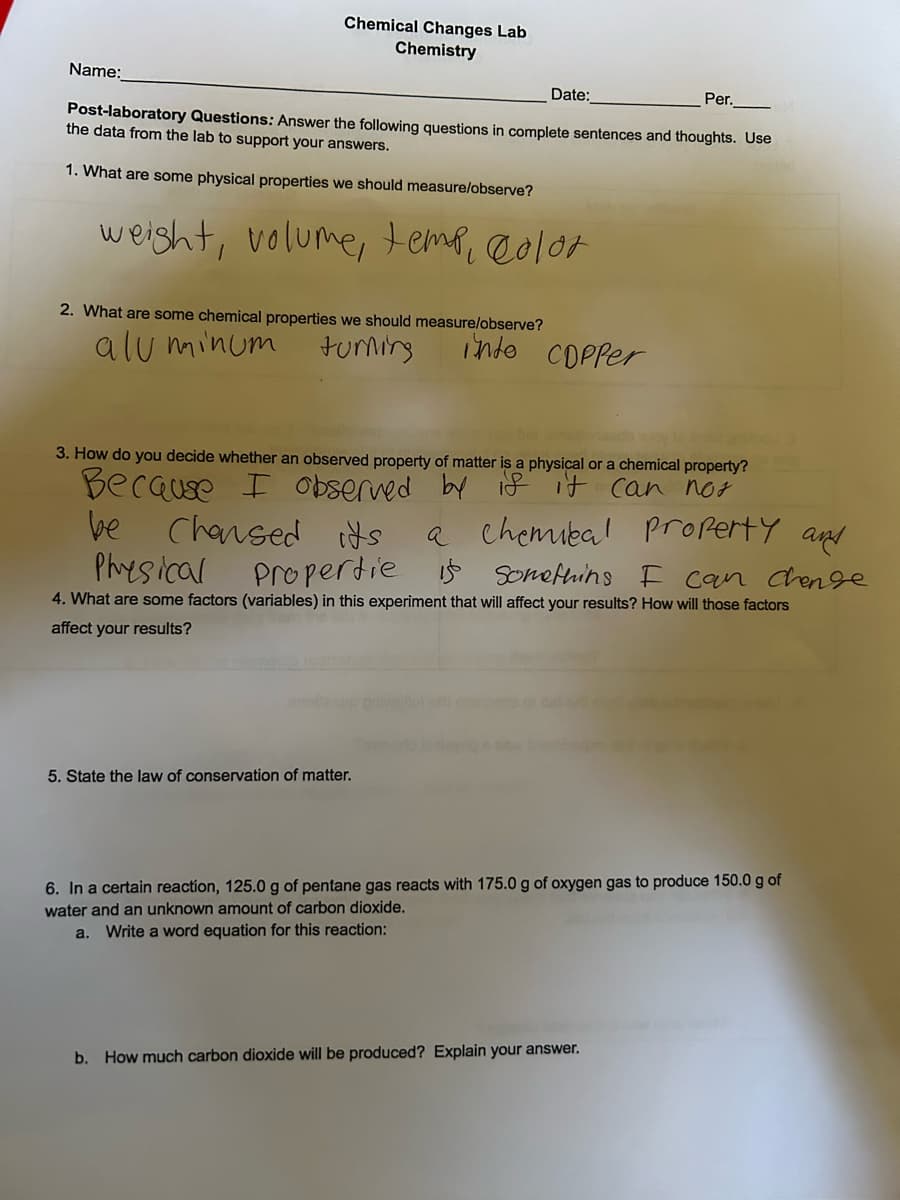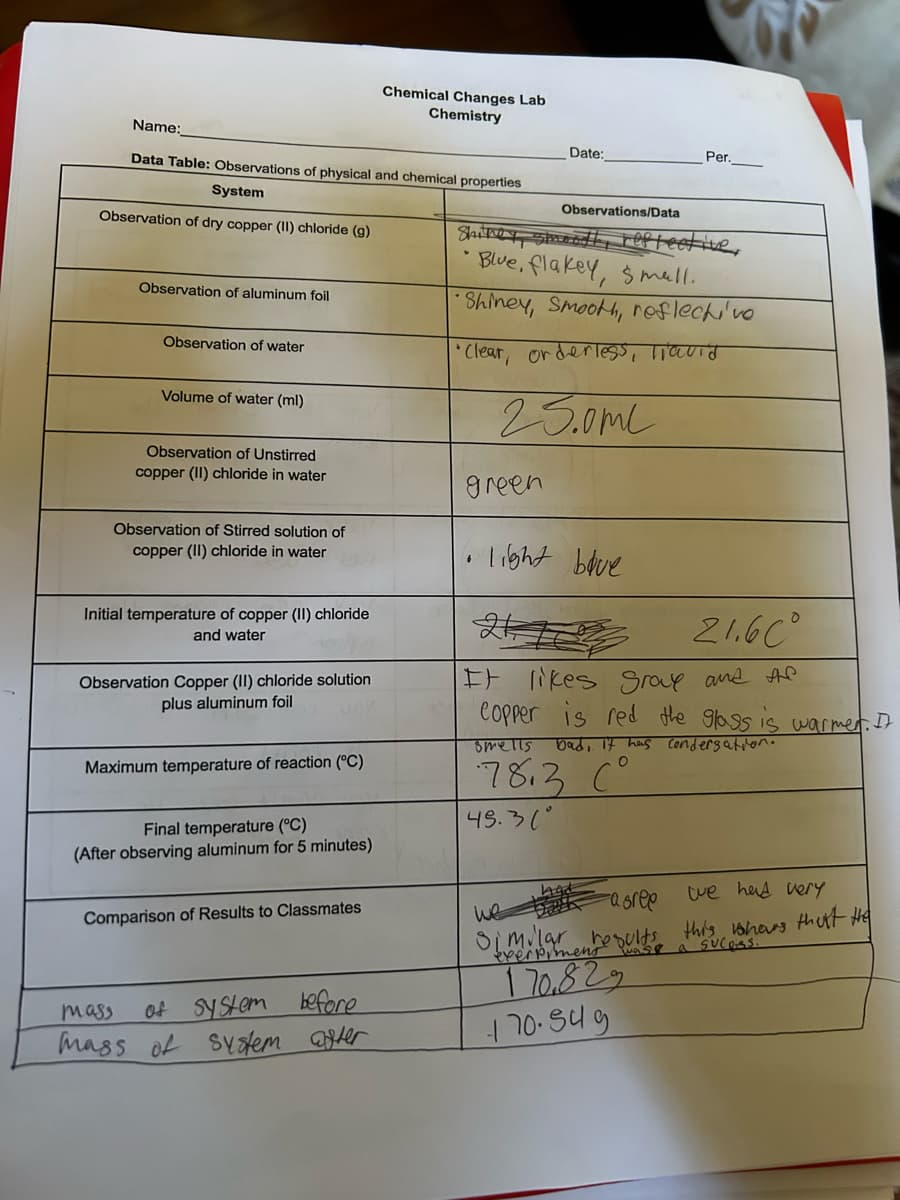Chemical Changes Lab Chemistry Name: Per. Post-laboratory Questions: Answer the following questions in complete sentences and thoughts. Use the data from the lab to support your answers. 1. What are some physical properties we should measure/observe? weight, volume, temp, color 2. What are some chemical properties we should measure/observe? turning aluminum Date: 5. State the law of conservation of matter. inte COPPer 3. How do you decide whether an observed property of matter is a physical or a chemical property? Because I observed by if it can not be Chansed its a chemical property and Physical propertie is something I can chans 4. What are some factors (variables) in this experiment that will affect your results? How will those factors affect your results? 6. In a certain reaction, 125.0 g of pentane gas reacts with 175.0 g of oxygen gas to produce 150.0 g of water and an unknown amount of carbon dioxide. a. Write a word equation for this reaction:
States of Matter
The substance that constitutes everything in the universe is known as matter. Matter comprises atoms which in turn are composed of electrons, protons, and neutrons. Different atoms combine together to give rise to molecules that act as a foundation for all kinds of substances. There are five states of matter based on their energies of attraction, namely solid, liquid, gases, plasma, and BEC (Bose-Einstein condensates).
Chemical Reactions and Equations
When a chemical species is transformed into another chemical species it is said to have undergone a chemical reaction. It consists of breaking existing bonds and forming new bonds by changing the position of electrons. These reactions are best explained using a chemical equation.


Trending now
This is a popular solution!
Step by step
Solved in 3 steps with 1 images




